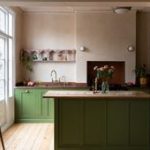Mirrors work for more than checking your look before you head out the door—they are also a key component in interior design and can complete a room when used correctly. However, sometimes mirrors can actually detract from your decor if not used properly.
We spoke with design experts to find out how to avoid missteps when decorating with mirrors.
Meet the Expert
- Keely Smith is an interior designer with Home Stratosphere in North Vancouver, BC.
- Mimi Meacham is the founder and principal designer of Marian Louise Design interior design firm.
- Molly McGinness is the owner of the Cape Cod design firm Molly McGinness Interior Design.
Consider the Reflection
A mirror is a bit like a window with an internal view: You want to see something interesting or pretty when you take a look. Putting a mirror in a place where there is little of interest in the reflection is not the best use of wall space.
Even worse, placing a mirror opposite an unsightly space that you might want to hide only highlights that spot.
“Before you hang [a mirror], think about the colors, the lighting, and what will be mirrored,” says interior designer Keely Smith. “A reflection of a beautiful outdoor view or a stunning piece of art? Perfection. But a cluttered desk or an unsightly corner? Not so much.”
Want more design inspiration? Sign up for our free daily newsletter for the latest decor ideas, designer tips, and more!
More Is Not Better
As with anything else, it is possible to go overboard with the use of mirrors in your home. More is not always better. You want to balance a mirror with other types of decor on your wall to create the most impact.
“Place them where you will actually use them and then in spots that will reflect the room to help it appear bigger,” says Mimi Meacham, founder and principal designer of Marian Louise Design.
When hanging a mirror, take into consideration the scale of surrounding features. Smith says putting a mirror above a tall fireplace disturbs a room’s balance because it takes away from the naturally featured design item. Instead, she suggests placing a piece of art or a mirror that hangs lower to keep things in harmony.
Going Too Small
On the other side of the decor pendulum, relying on a smaller mirror to carry a larger space doesn’t always work. This is especially true in a bathroom.
Molly McGinness, designer and owner of Molly McGinness Interior Design firm, warns against the use of a small mirror that is placed too high above a bathroom vanity.
“This is awkward for the end user and also misses the opportunity to create the feeling and illusion of a larger space in a typically small room,” she says. “Especially in a small powder room, make the most of a mirror and err on the larger size. This will expand a space and give the end user a useful view.”
This is true for almost every room in a house, not just the bathroom; going small in any room throws the entire design off and makes the whole space look a bit awkward. You want your mirror of choice to be proportional to the wall it’s on and the furniture around it.
Disrupting Energy and Flow
Where you put your mirrors could affect more than just the aesthetic of your home. Some placements are considered “bad feng shui,” referring to an ancient Chinese practice that uses the forces of energy to align people with their environment.
Smith says one client taught her that placing a mirror facing the main entrance of a home is just repelling any positive energy that might be trying to enter the space. Instead, Smith advises a perpendicular placement or—even better—a vertical arrangement.
“It can capture a side glimpse of anyone entering, adding a layer of security,” Smith says.
Mirrors can help a small space look larger, amplify light in a darker room, and add beauty to your overall decor. Take note of experts’ experience with mirror mistakes, and your end result will reflect a stylish home that always looks its best.







